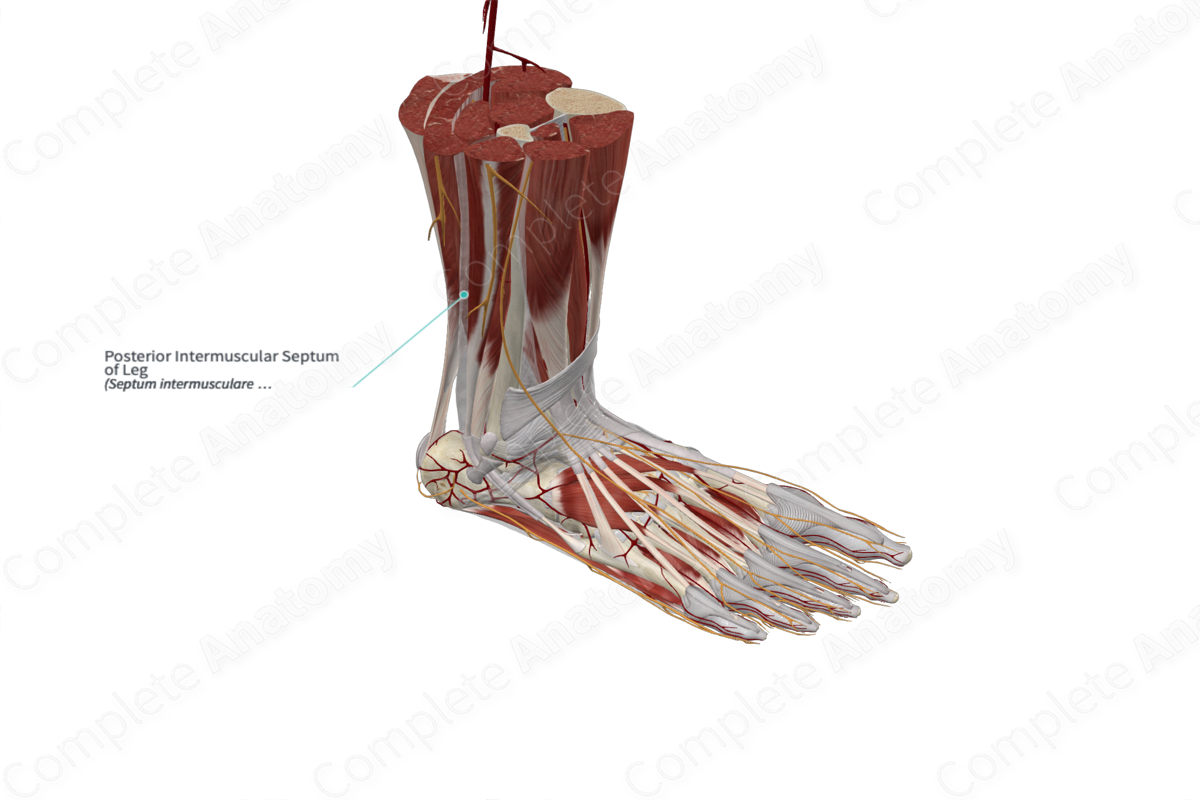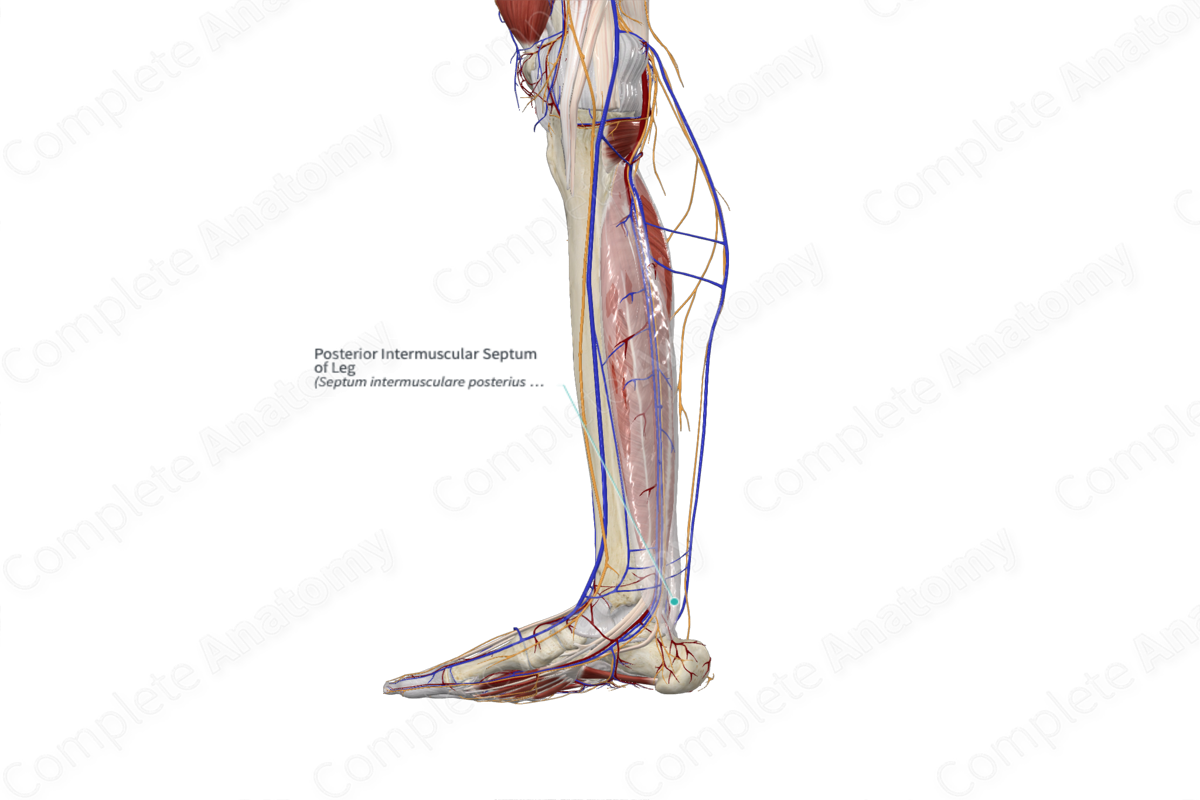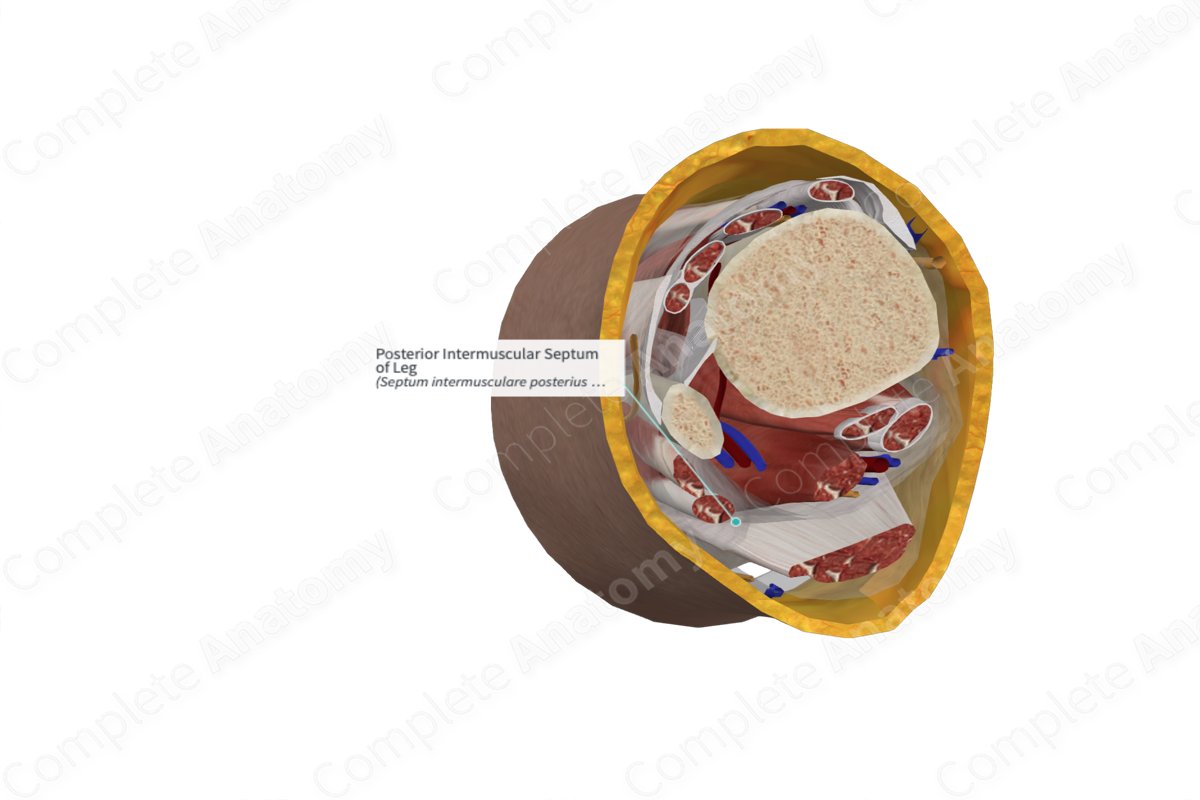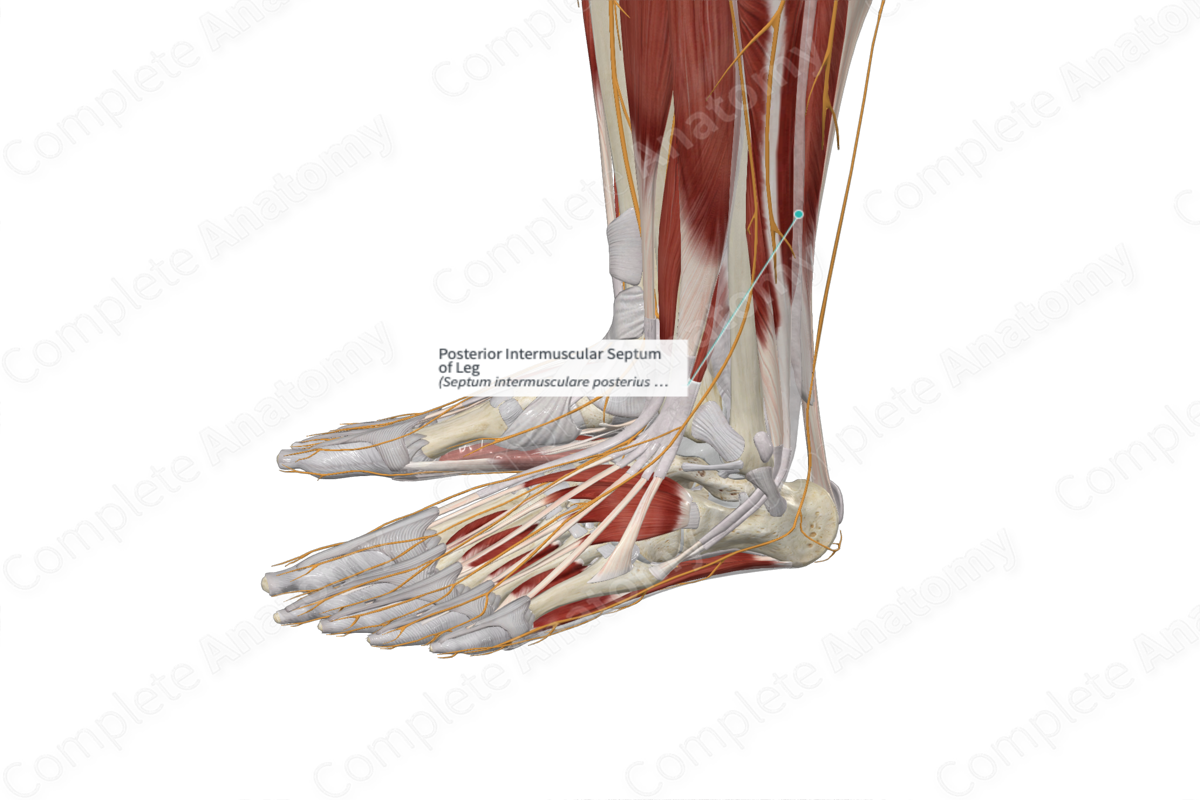
Posterior Intermuscular Septum of Leg
Septum intermusculare posterius cruris
Read moreStructure
The posterior intermuscular septum is one of the three intermuscular septae of the lower leg, with the remaining two being the anterior and transverse intermuscular septae. These intermuscular septae are continuous with the crural fascia and separate the muscles of the leg into functional compartments.
The posterior intermuscular septum, along with the crural fascia, fibula, and the interosseous membrane, separates the posterior compartment of the leg from the lateral compartment.
Related parts of the anatomy
Anatomical Relations
The posterior intermuscular septum is a sheet fascial sheet, which is an extension of the overlying crural fascia. It extends deep between the fibularis longus and brevis muscles in the lateral compartment and the flexor hallucis longus and soleus muscles in the posterior compartment, to attach to the posterior border of the fibula.
Function
The three intermuscular septae of the leg help separate the muscles of the leg into functional compartments.
List of Clinical Correlates
—Compartment syndrome



